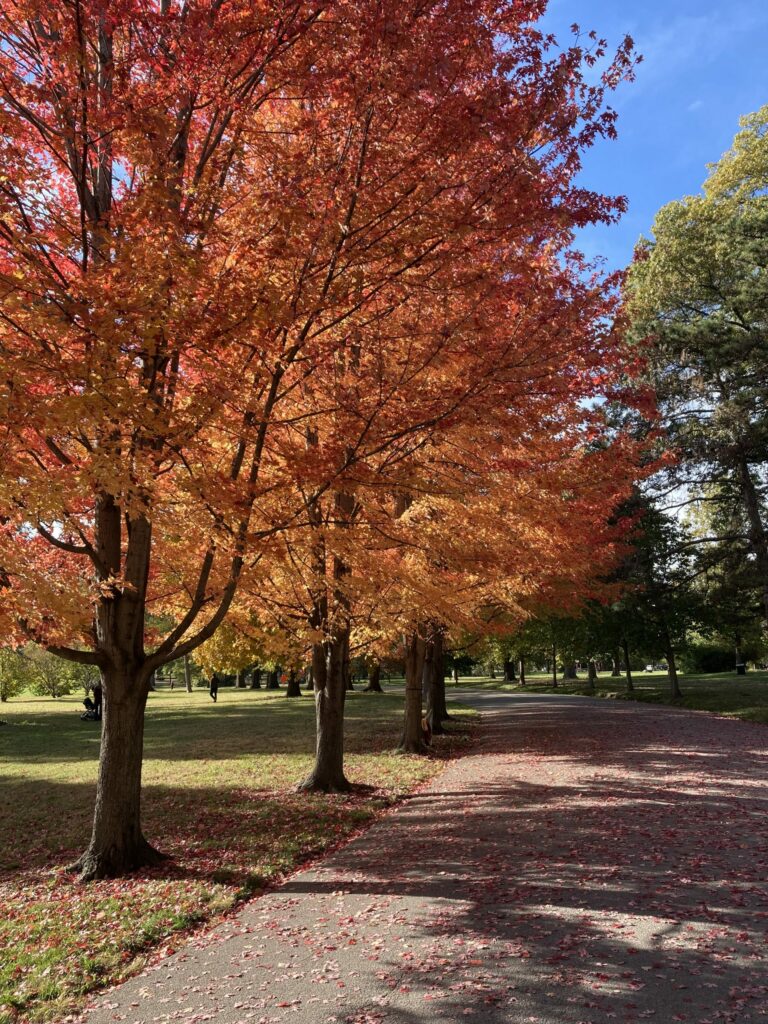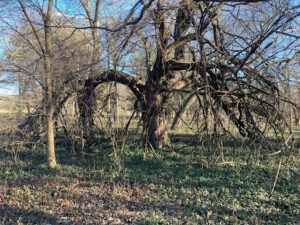By: Mark Halpin, Forestry Manager
Acer rubrum, Red Maple, has become a very fashionable tree to dislike in the arboricultural world, because it has been so criminally over-planted. Like dwarf boxwoods and dyed black mulch it has become synonymous with bland, uninspired landscapes that never seem to fully develop and always look exquisitely “meh.” Small, sickly specimens can be seen everywhere, struggling to grow in construction-damaged junk soil, surrounded by over-irrigated and over-fertilized blankets of emerald green turf grass, its apparent health concealing the horrors that lie beneath.
Of course if any tree of beauty is going to survive such insulting conditions it would be the Red Maple (or the Green Ash, but that is no longer an option thanks to Emerald Ash Borer). That it often doesn’t is testament to how good we’ve gotten at destroying soil. Also called “swamp maple” (although never in the nursery trade!) this species, like many that inhabit wet bottomlands (Green Ash, Pin Oak, Sweetgum), is extremely tolerant of soil compaction and degradation. It also grows fast and easy in the nursery setting and landscape, and provides reliably exquisite fall color as well as reddish flowers and leaf color in early spring. It’s size is just about perfect for the planted landscape, typically 40-60’, and its “helicopters” (samaras, winged seed pods) are relatively small and unobtrusive.
Almost sounds like the perfect tree, right? That’s certainly what nurseries and landscapers have thought for many years, hence its overuse. And that’s really the problem – there’s just too many of them. Cultivars have proliferated at a dizzying rate and it continues to be perhaps the most popular planted tree. It is a favorite of Asian Longhorned beetles, which have yet to become a serious issue in our region but will almost certainly do so one day soon, and so our Missouri Department of Conservation cautions against its continued use, but that seems to fall on deaf ears (once more let’s recall the fate of Green Ash…).
It’s hard to talk people out of this one, because it does seem so perfect. It really is a gorgeous tree…the only complaint “normal” people seem to have about it is its tendency (like all maples) to form surface roots that interfere with that lush green turf. “It’s been overplanted” strikes many people as a petty, aesthetic complaint, especially when it’s accompanied by pleas to plant some weird, unheard of native trees with unappealing names like “Eastern Wahoo” or “Black Gum” (which we should really start calling a “Red Pepperidge” or something a little more musical. “Black gum” is a terrible common name and makes people confuse it with Sweetgum).
To convince such “normal”, botanically uninitiated people that this is a valid argument, you need to start invoking history, and science, and Dutch Elm Disease, Chestnut Blight and Emerald Ash Borer and the dangers of monocultures. If you expect the average person to hear you out through all that, you’re in for some serious disappointment. Eyes glaze over, a fog of boredom clouds the mind, and a Red Maple is planted. And the seeds of another arboricultural tragedy are sown.
It’s a beautiful tree. I love it. Go out and appreciate the fall color, and the many, many beautiful specimens around, but please don’t plant yet another one. Plant a “Red Pepperidge” instead.




